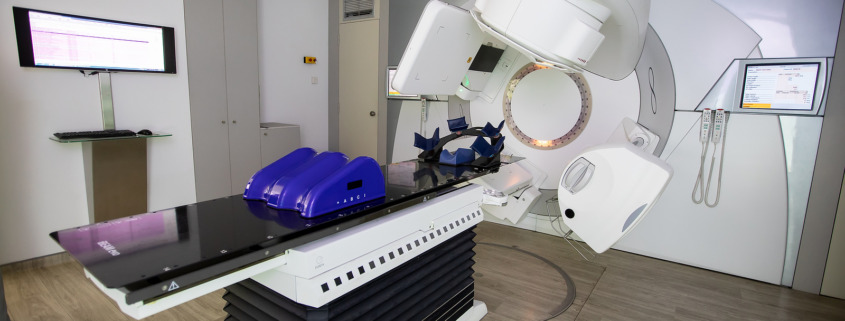How ExacTrac Dynamic Technology Improves the Effectiveness of Radiotherapy
When a cancer patient undergoes radiotherapy, it is essential that the tumour is targeted precisely. This not only ensures a greater chance of killing the cancerous cells, but reduces the likelihood of healthy cells being destroyed instead.
ExacTrac Dynamic technology helps improve radiotherapy outcomes by offering high-tech image guidance so that the tumour is targeted more accurately.
So, how does it work?
What is ExacTrac Dynamic technology?
ExacTrac Dynamic works by accounting for the continuous motion of a patient, such as how their body moves when they are breathing or how their prostate rises if they pass gas.
Although these fluctuations of movement might be small, it is essential they are accounted for when implementing radiation therapy so that the exact location is targeted.
To be as precise as possible, external markers on the skin are typically used, together with imaging scans, so the radiation experts know where to position the beams for the best chance of targeting the tumour.
However, ExacTrac Dynamic provides real-time information about the patient, such as their temperature, movement, anatomy and shape, through high-resolution surface and thermal imaging. This gives doctors the most accurate data they need to increase the success of the treatment.
How does it work?
More than 300,000 3D surface points are acquired from the patient and a 4D thermal camera provides information about the patient’s heat signature based on this reconstructed 3D image of their body.
This means doctors are able to gather as much information as possible about the patient’s body in real-time, allowing them to more accurately target the radiation beams.
How effective is ExacTrac Dynamic?
According to a recent study, which was published in J Appl Clin Med Phys, ExacTrac Dynamic “with its new optical/thermal imaging system is an efficient tool for positioning and monitoring during radiation therapy”.
As well as being highly effective, it is favourable among patients as it allows them to experience more targeted treatments. Therefore, their radiation therapy sessions might be shorter and they may not need as many to fully target the tumour.
This means the risk of experiencing short- and long-term side effects of radiotherapy can be reduced. This can have a big impact on a patient’s mental and physical wellbeing, as these side effects can include problems eating and drinking, fatigue, hair loss, skin reactions, fertility issues and a change in libido.
It can put patients at a higher risk of infection by reducing their white blood cell count, or make them anaemic if their red blood cells become too low. This could mean they require a blood transfusion.
Radiation therapy can also cause a dry mouth, difficulty swallowing, changes in taste, and reduced appetite, which can cause patients to lose weight.
Of course, the longer someone has to undergo cancer treatment, the bigger impact it has on their mental health. The physical side effects, such as tiredness, can make a patient feel depressed, while they may also feel isolated, frustrated at not being able to do the things they normally can, and anxious about their future.
By being able to reduce the number of radiotherapy sessions, patients are less likely to suffer as much from the side effects.
What’s more, there is no need to have permanent markers on their skin, which can act as a constant reminder of their cancer journey.
What cancers can ExacTrac Dynamic be used for?
ExacTrac Dynamic can be used for several different types of cancers where radiation therapy is an appropriate course of treatment. This includes breast, lung and prostate cancer.
It can also be effective in the treatment of brain tumours, especially as surgery is sometimes not an option and radiotherapy might be the only option available.
Radiotherapy can also be used to shrink tumours as part of palliative care, making cancerous symptoms more bearable for patients. It can also slow down the growth of cancer, prolonging life, or reduce the size of the tumour so it is easier to operate on.
It can also be an option to reduce pressure on the spinal cord by shrinking the tumour, control an ulcerating cancer, or treat a blood vessel blockage in the chest.
Having ExacTrac Dynamic technology helps to speed up the effectiveness of the radiation therapy, so surgery can be booked in sooner, a patient’s symptoms can be eased more promptly, and their life expectancy can be extended.


